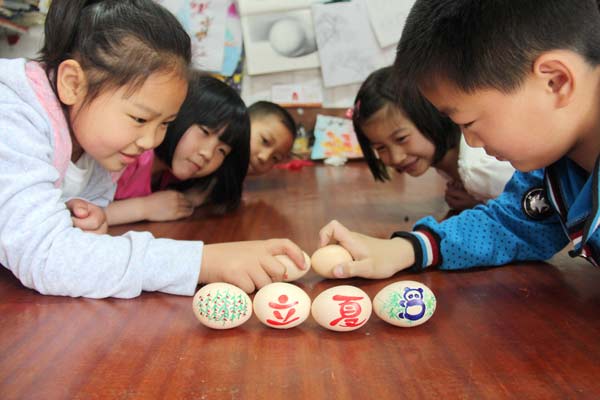
|
 |
|
Children at an arts training center in Yunxian county, Shiyan, Hubei province, play an egg fighting game on May 5, the day summer begins.Cao Zhonghong / for China Daily |
The ancient system of dividing the year according to solar themes is being used by businesspeople to boost sales
"Lychees for June 5; cherries for June 21; waxberries for July 7," intoned Wang Lanzhi, a 46-year-old Shanghai housewife, as if reciting a poem. This routine has been directing her purchases and use of fruit for decades, she said.
For Wang, food shopping is not dictated by price. Instead, the zodiac rules what she eats every fortnight of the year.
Like buying carnations on Mother's Day or roasting a bird near the end of the year, buying roasted green tea during the guyu period in mid April,which is also known as "grain rain", and making plum syrup on xiazhi, or summer solstice, is essential for Chinese who follow an annual cycle of 24 solar periods.
The Chinese initiated the system as early as 2,000 years ago, and it has now blended with modern lifestyles.
The zodiacal cycle is divided into 24 segments, each lasting roughly two weeks. In the lunar calendar, the date of each solar term is more or less fixed, apart from minor changes of a day or so.
"The 24 solar periods were determined by changes in the sun's position throughout the year, so the system is based on the duration of sunlight per day, temperature, humidity and other factors affecting the cultivation of grain, vegetables, fruit and breeding of livestock. They also determine outdoor activities and indoor entertainment," said Wang.
